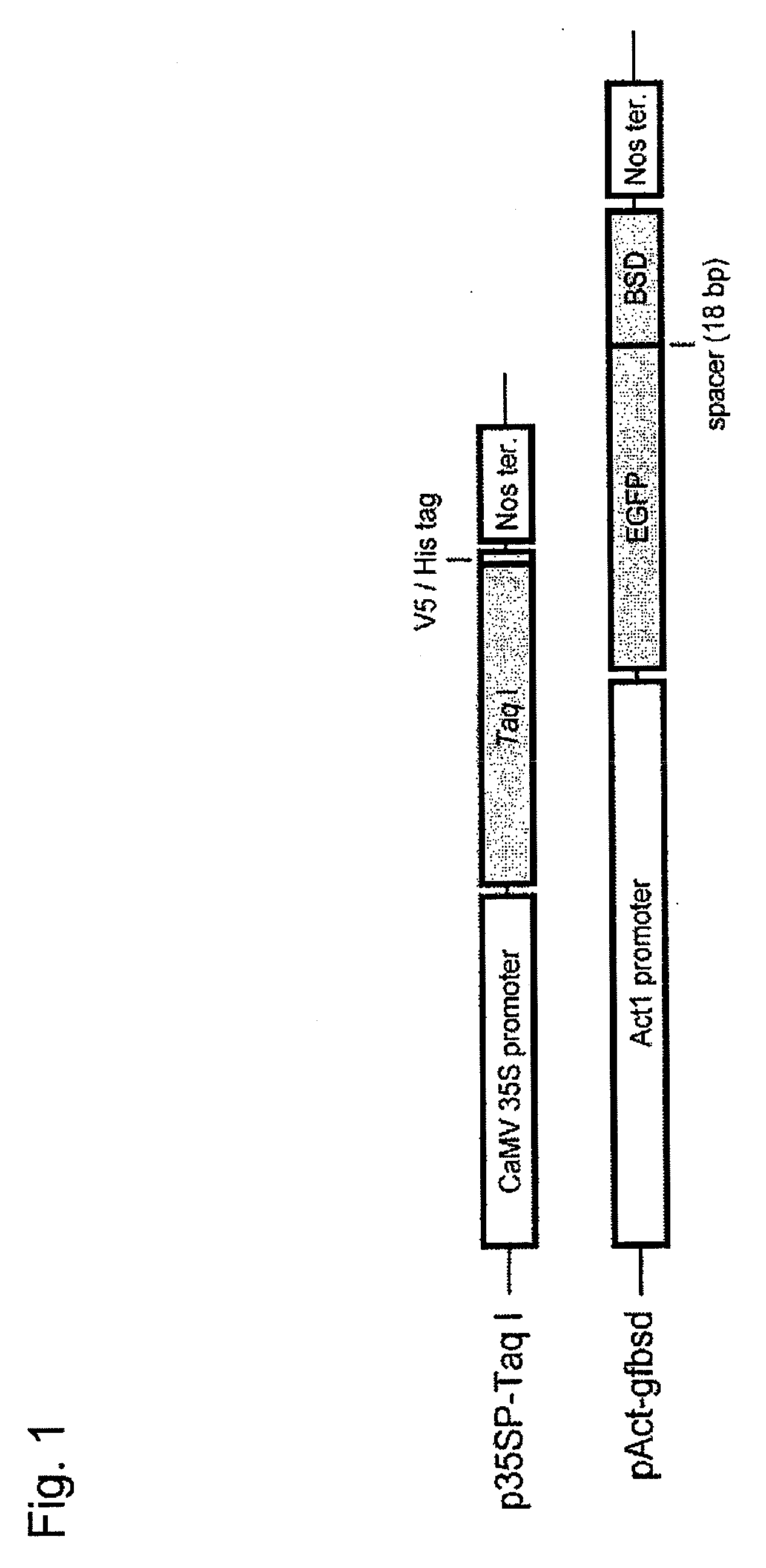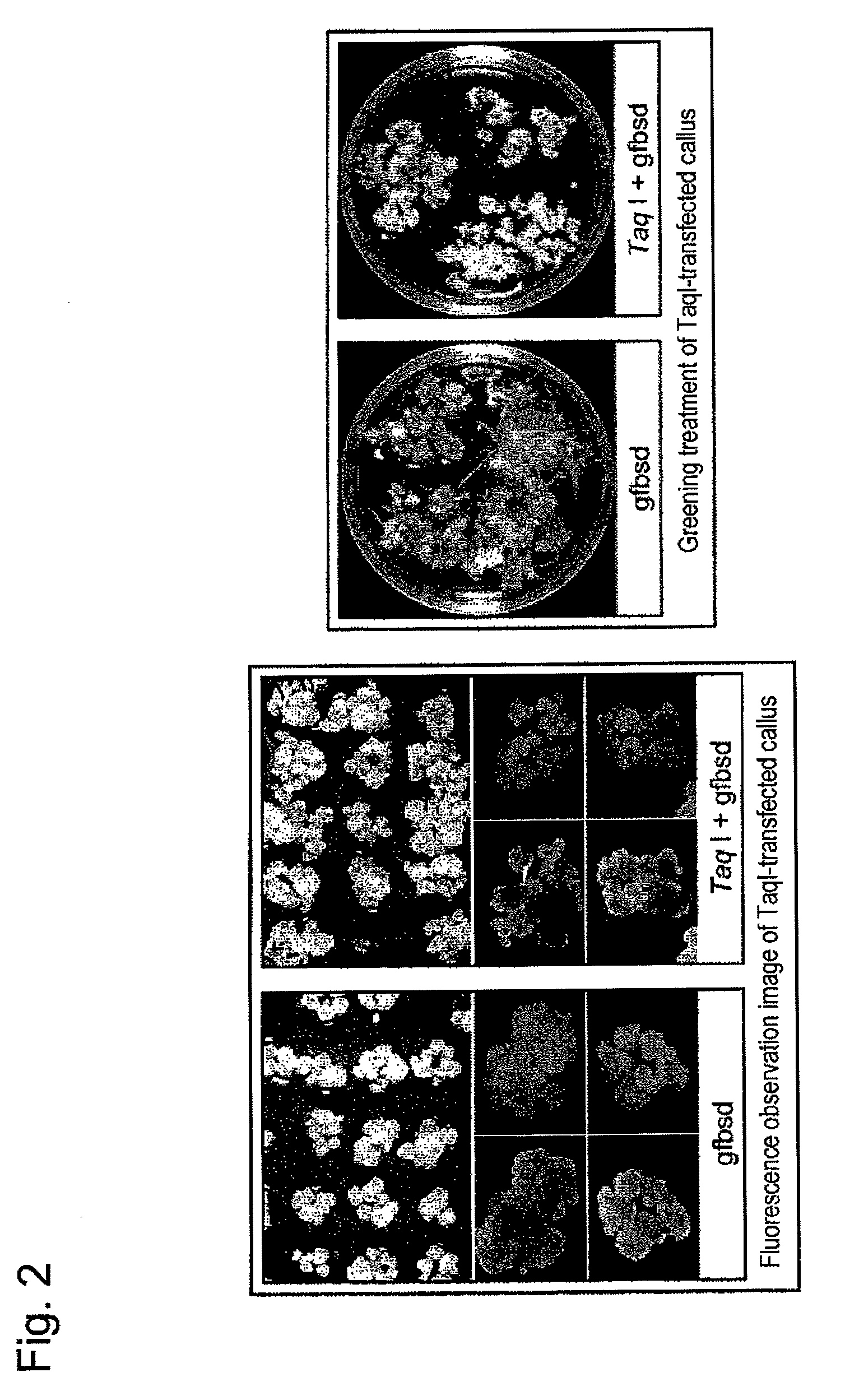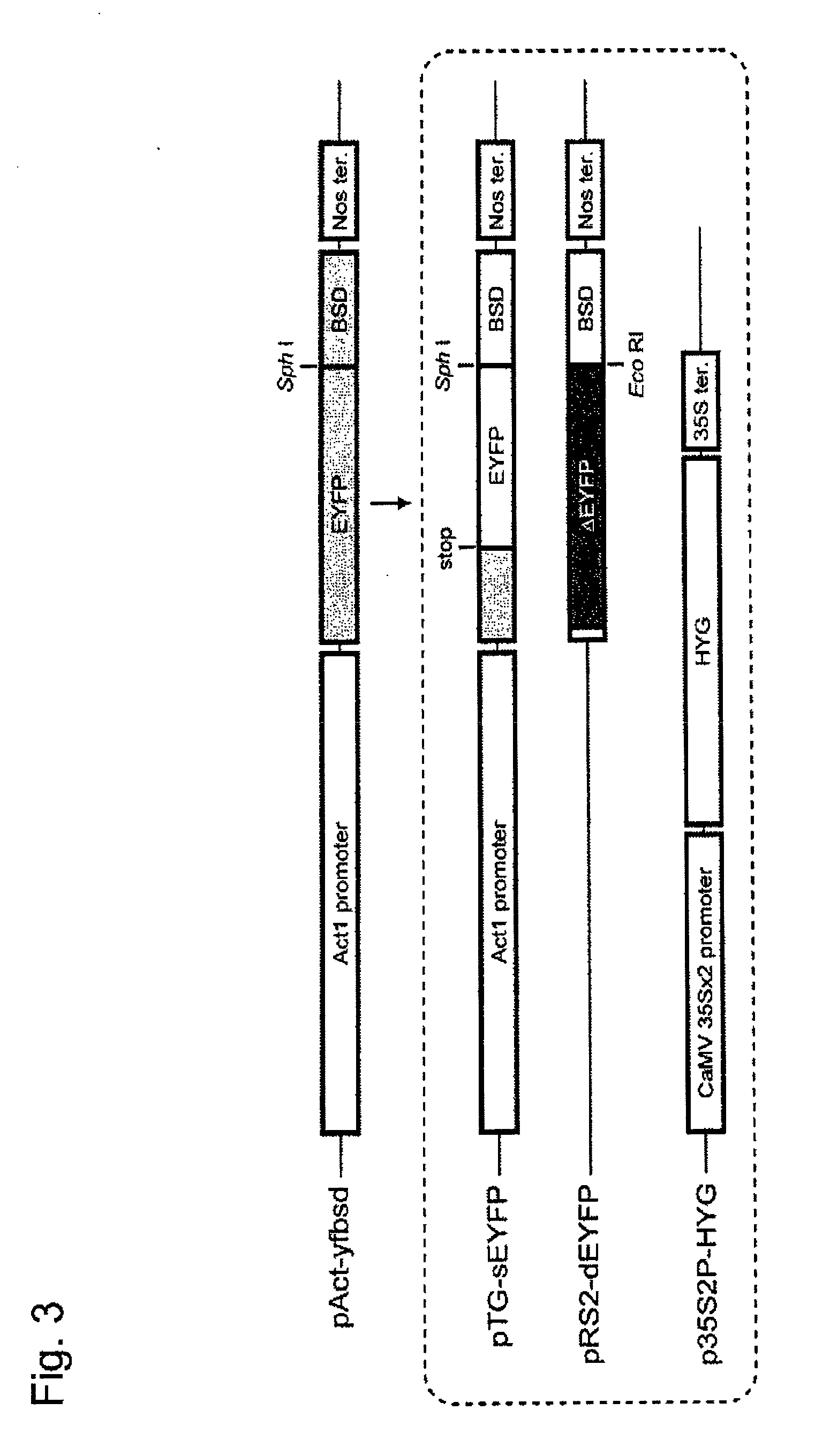Mutant plant, a method for producing thereof and a method of increasing frequency of a genetic recombination
a technology of genetic recombination and plant, which is applied in the field of mutant plant, can solve the problems of inability to obtain mutant plants having rearranged genomic dnas, plant cells die, etc., and achieve the effect of reducing the proportion of plant cells killed by a restriction enzyme gene introduced therein
- Summary
- Abstract
- Description
- Claims
- Application Information
AI Technical Summary
Benefits of technology
Problems solved by technology
Method used
Image
Examples
example 1
Method
(1) Production of A YFP Recombination Detection Marker
[0085]In order to detect the occurrence of homologous DNA recombination, a pAct-yfbsd plasmid (corresponding to the upper construct in FIG. 3) was constructed by ligating the EYFP gene (Clontech) and the bsd gene serving as a fluorescence gene and a drug selection marker gene to each other via a spacer sequence consisting of 6 amino acids (GGG CTC CAC GTG GCC GGC) and inserting the resultant immediately downstream of an Act1 promoter. A pTG-sEYFP plasmid emitting no YFP fluorescence was constructed by modifying the 114th lysine (AAG) in the EYFP gene region of pAct-yfbsd with a termination codon (TAG) using one-nucleotide substitution, and the plasmid was designated as a receptor marker gene (TG marker) (corresponding to the second construct from the top in FIG. 3). Meanwhile, an EYFP-deficient plasmid (pRS2-dEYFP) (from which the Act1 promoter had been removed) was constructed by deleting 54 nucleotides from the initiation...
example 2
[0096]In this Example, experiments of inducing genetic recombination of genomic DNA were carried out in the manner described above with the use of a restriction enzyme other than TagI, which was used in Example 1.
Method
(1) Production of An Sse9I Expression Plasmid
[0097]Total DNA synthesis was carried out to optimize the codon use rate of a plant (Arabidopsis thaliana) based on the nucleotide sequence information of the Sse9I gene from Sporosarcina sp. The nucleotide sequence of the synthesized Sse9I gene is shown in SEQ ID NO: 18. In addition, the totally synthesized Sse9I gene was cloned into pDONR221 (Invitrogen). The obtained vector is referred to as “TCL-AtSse9I / pDONR221.”
[0098]Next, PCR was performed using TCL-AtSse9I / pDONR221 as a template and the oligo DNAs described below. Thus, an Sse9I gene fragment was obtained.
(SEQ ID NO: 19)GAGGCGCGCCATGGGCATGAACAGCAGATTGTTAA
(Here, the underlined portion represents an AscI restriction enzyme recognition site.)
(SEQ ID NO: 20)GCTTAATTAATT...
example 3
[0107]In this Example, it was demonstrated how the genomic DNA homologous recombination rate would vary as a result of heat treatment following restriction enzyme gene introduction.
Method
[0108]In this Example, the TaqI gene (p35SP-TaqI (see Comparative Example 1)) used in Example 1 was introduced into plant cells, followed by heat treatment. Specifically, in this Example, ripe TG / RS(T2) seeds prepared in Example 2 were subjected to callus induction by the method described in (2) in Comparative Example 1 and then cultured on a mannitol-containing medium. Then, the TaqI gene (p35SP-TaqI) was introduced thereinto by a particle gun method. A callus mass at 24 hours after subjected to gene introduction was sown on an N6-BS selection medium and subjected to heat treatment at 40° C. or 50° C. for 1 hour. The callus mass subjected to heat treatment was grown again at 32° C. Fluorescence emitted from the callus mass in each treatment area was observed at Days 3, 5, and 7 after heat treatment...
PUM
| Property | Measurement | Unit |
|---|---|---|
| temperature | aaaaa | aaaaa |
| temperature | aaaaa | aaaaa |
| temperature | aaaaa | aaaaa |
Abstract
Description
Claims
Application Information
 Login to View More
Login to View More - R&D
- Intellectual Property
- Life Sciences
- Materials
- Tech Scout
- Unparalleled Data Quality
- Higher Quality Content
- 60% Fewer Hallucinations
Browse by: Latest US Patents, China's latest patents, Technical Efficacy Thesaurus, Application Domain, Technology Topic, Popular Technical Reports.
© 2025 PatSnap. All rights reserved.Legal|Privacy policy|Modern Slavery Act Transparency Statement|Sitemap|About US| Contact US: help@patsnap.com



